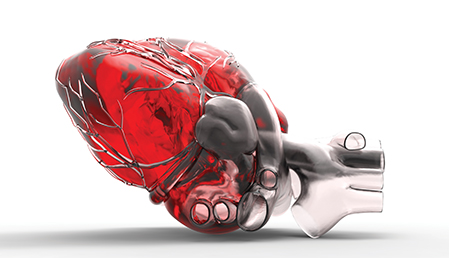Digital health continued to find a home at the annual consumer electronics shindig in the desert, with fitness, wellness and medical exhibitors up 30%. AstraZeneca’s Joe Shields walked the halls to check out what’s hot in health tech
Even though Google and Apple do not participate, the Consumer Electronics Show (CES)— held in Las Vegas the first week in January—is a bellwether for the consumer technology industry. CES is also becoming more important to the healthcare sector. Steven Sinofsky at the Harvard Business School wrote, “It is hard to avoid concluding that CES is our era’s expression of the future—transportation, healthcare, communication, entertainment, and more are represented by the innovation on display.” With that in mind, here’s a perspective on some of the technologies and trends at CES 2014 that will continue to influence healthcare in the coming years.
Wearables Become Fashionable
Are those Warby Parker frames on your Google Glass? Probably, since the headline for a recent Wired magazine cover story was, “Why Wearable Tech Will Be as Big as the Smartphone.” The main hurdle, the author asserts, is that wearables must become more fashionable. Even design-savvy Apple has hired fashion industry luminaries to bring more personal style to its wares. It’s only a matter of time before designers of medical devices and software embrace this trend.
CES saw an explosion in fitness and health trackers this year, as manufacturers like FitBit expanded their product lines, more startups like Basis entered the fray, and established electronics companies like Sony took the plunge. Interactive mobile timepieces, formerly known as smart watches, are becoming dashboards for smartphones, displaying highlights and alerts from health, fitness and other types of apps.
Sensors Tracking More than Steps
Two new health segments with sensor-based products are monitoring head injuries and tracking UV exposure from the sun. Reebok’s Checklight is a thin cap with a sensor designed to measure cumulative head impact using accelerometers, giving trainers and healthcare providers more real-world data to help with treating and preventing concussions.
The June UV detection bracelet by Netatmo measures cumulative sun exposure and wirelessly integrates with a smartphone app. It’s part of a trend where cheap sensors feed data to apps and smartphones that do the heavy lifting of analytics, pattern recognition, visualization and connection to the cloud.
Homes Are Getting Smarter
Like the World’s Fairs of yesteryear, a few CES exhibitors built full-scale high tech homes to give visitors a tactile glimpse of the future. Intel and Qualcomm displayed the hyper-connected Internet of Things using the smart home as a platform to visualize use cases for every member of the family. These products assume the presence of cloud computing, and benefit by becoming part of an integrated network with nodes that share data and trigger each others’ actions.
One can see uses for healthcare, as these sensors, devices and communications can be used for inventory management for supplies like insulin and medicines, virtual office visits with healthcare professionals, and social connectivity for those “aging in place.”
Don’t Call it 3D Printing
3D printing is a process of making a three-dimensional solid object of virtually any shape from a digital model. Although it has been around for several years, it’s starting to make inroads into healthcare. For example, this process is being used to create medical devices, synthetic bones and high-tech casts for broken arms. In fact, online tech site Gizmodo wrote a piece in December titled, “How 3D Printers Are Cranking Out Eyes, Bones and Blood Vessels.”
There are even low-tech versions of additive printing, like a pen from The3Doodler.com that lets users manually write layer upon layer of liquid polymer to create solid 3D shapes and designs that dry solid.
eCigarettes Push on Regulatory Boundaries
eCigarettes got my attention, but not because I think they’re a breakthrough technology. Several “vaping” booths were at the edges of the exhibit floor’s Digital Health section, and most passersby seemed to regard eCigarettes as a health product since their makers claim them to be a safer alternative to tobacco.
Yet there is a lack of evidence that eCigs are safe, and recent news suggests that they may be subject to more regulation and require further studies on health effects. The lesson is that biomedical regulatory bodies will continue to be challenged to expand their jurisdictions as entrepreneurs find ways to uncover and satisfy unmet consumer wants and needs.
CES is at times a trade show, talent market, geek meetup, world’s fair, and three-ring circus. Many of its ideas and products will soon be in our homes and workplaces, while the rest will disappear. For technology to matter in healthcare, it must change behavior. To have a sustainable business model, technology needs to prove that it is part of the solution in creating positive health outcomes. See you next year!
Joe Shields is global director, campaign management at AstraZeneca, and enthusiast of functionally effective shiny objects.
From the March 02, 2014 Issue of MM+M - Medical Marketing and Media







